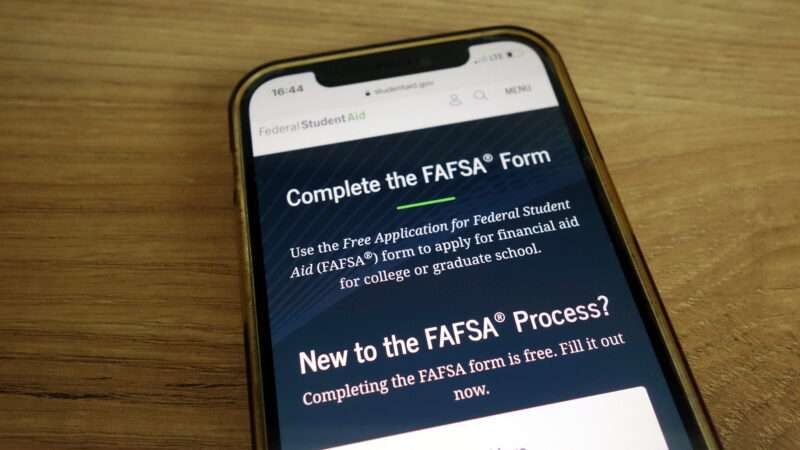
This year's Free Application for Federal Aid (FAFSA) form—which is required for students seeking federal loans and grants, as well as institutional financial aid at most colleges—has been riddled with catastrophic technical bugs.
How did the situation get so bad? It starts with an attempt to simplify the form—in part, by importing families' financial information directly from the IRS.
In 2020, Congress passed the Consolidated Appropriations Act, which required the Education Department to develop a streamlined version of the financial aid form. While this may seem like a perfectly fine idea on paper, the results have been riddled with delays and technical glitches.
The new FAFSA was first made available—albeit in an only periodically accessible "soft launch"—on December 31, 2023. The new form had less than half the number of questions as in previous versions, a feat mostly accomplished by importing parents' tax data. But significant problems almost immediately appeared.
For starters, it was launched almost two months later than usual—and the Education Department didn't extend the deadline to compensate for the reduced availability. Once families were able to access the form, many faced frustrating technical glitches.
More than three months after the FAFSA's launch, many of these glitches have persisted. The FAFSA's own website details dozens of technical bugs. Last month, the Education Department acknowledged that it had given colleges faulty information about 200,000 students—possibly leading students to receive more aid than they would otherwise be eligible for. And last week the department announced that around 30 percent of FAFSA applications include a data or processing error.
As a result of these issues, completed FAFSA applications as of late March are down 40 percent when compared to last year. Unless there is a dramatic turnaround, millions of college students will not receive financial aid that they are eligible for.
Even for students who completed the FAFSA successfully, many have been left in a daunting limbo by the Education Department's failure to deliver accurate information to colleges. The sticker price at many universities is eye-popping, even if few students actually pay it. Without accurate, timely information about their financial aid packages, many college students are left unsure if they will be slapped with these giant bills.
The post FAFSA Glitches Cause Chaos for Millions of College Students appeared first on Reason.com.







